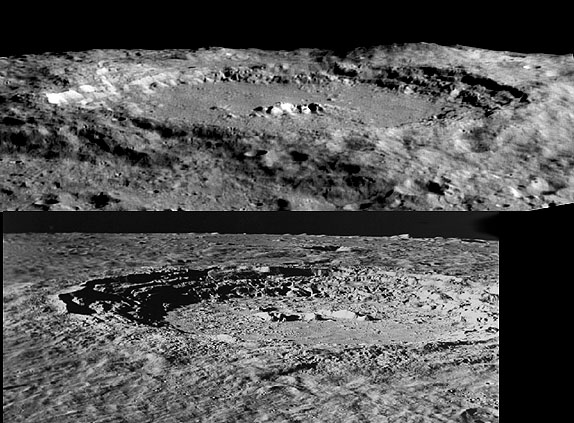Ya seen one crater, ya seen em all. Sometimes that's the way it feels. Because the energy involved in impact crater formation is so immense, craters of similar size and freshness look pretty much alike. For example, consider these two behemoths. The bottom crater is Copernicus, 93 km wide and famous for its great location for viewing from Earth. The top image is Housen, 167 km wide and hardly seen at all because its right on the southwest limb beyond Bailly. Despite the difference in diameters the craters look very similar - both have scarped walls with terraces that step down to the flat floor, which littered with central mountains. Fresh impact craters from 40 km in diameter to about 200 km look pretty similar. At larger sizes there is a transition to peak ring craters and then multi-ring basins.
Technical Details:
This magnificent image of Hausen (top) was taken by Frederic Mallmann using the 24" Cassegrain telescope
at Ludiver Observatory in northern France on 19 Oct. 2003. The telescope worked at f/16 and infrared
filter was used. A ToUcam was used with 1/25 s exposures and the best 400 of 2700 images were used.
Full details here:http://fmallmann.free.fr/dethaus.html
The Copernicus shot (bottom) was made with more expensive equipment: Apollo 17.
Related Links:
Mallmann Web Page
Lunar Orbiter IV View
|
Yanvar' Fevral' Mart Aprel' Mai Iyun' Iyul' Avgust Sentyabr' Oktyabr' Noyabr' Dekabr' |
|
Publikacii s klyuchevymi slovami:
Moon - Luna - Lunar Photo of the Day - LPOD
Publikacii so slovami: Moon - Luna - Lunar Photo of the Day - LPOD | |
Sm. takzhe:
Vse publikacii na tu zhe temu >> | |
